The plant, also called Plectranthus, is part of the Labiate family. According to various sources, this genus includes from 250 to 325 species. The Latin name for the flower "plectranthus" is derived from two Greek words translated as "cock's spur" and "flower". It was from these words that the second name was formed - "bristle flower". Under natural conditions, such a plant is found in tropical and subtropical regions of the Southern Hemisphere, namely, on some islands of the Pacific Ocean, Madagascar, Indonesia, Australia, as well as in areas adjacent to the Sahara. Spurs are grown as ornamental, medicinal and aromatic plants, and the foliage of such a flower is used as a food spice. Some of the species are cultivated at home.
Content
- 1 Brief description of cultivation
- 2 Features of plectrantus
- 3 Plectrantus care at home
- 4 Types and varieties of plectrantus with photos and names
- 4.1 Plectranthus coleoides
- 4.2 Shrub Plectranthus (Plectranthus fruticosus)
- 4.3 Plectranthus oertendahlii
- 4.4 Southern Plekranthus (Plectranthus australis)
- 4.5 Felt plectrantus (Plectranthus hadiensis)
- 4.6 Plectranthus ciliatus (Plectranthus ciliatus)
- 4.7 Fragrant Plectranthus (Plectranthus amboinicus)
- 4.8 Ernst's Sparrow (Plectranthus ernestii)
- 4.9 Plectranthus oakleaf
- 4.10 Plectrantus Mona Lavender
- 4.11 Plectranthus blumei
- 5 Plectrantus properties: benefit and harm
- 6 Superstitions and omens
Brief description of cultivation
- Bloom... Cultivated as a decorative deciduous plant.
- Illumination... Grows best in partial shade, but can also be placed in a place with diffused and bright light.
- Temperature regime... During active growth - from 18 to 25 degrees, in winter - from 12 to 16 degrees.
- Watering... Moisten the potting soil often and abundantly immediately after it dries out about 20 mm deep.
- Air humidity... On hot days, as well as in a room with operating heating appliances, it is recommended to moisten the foliage every day with water at room temperature; instead, you can pour wet pebbles into the pallet and put a container with a flower on it.
- Fertilizer... During the growing season, once every 15 days, a complex fertilizer for deciduous plants is used for this. At other times, it is not necessary to feed the bristle flower.
- Pinching and trimming... In spring, the stems are shortened by ½ part.And during active growth, the upper parts of the shoots are systematically pinched.
- Transfer... Until the plant is 4 years old, it is transplanted regularly once a year, and older bushes are subjected to this procedure only if necessary. Transplant is carried out at the beginning of the growing season.
- Reproduction... By dividing the bush and cuttings.
- Harmful insects... Mealybugs, aphids and spider mites.
- Diseases... Downy mildew (downy mildew).
- Properties... In some species, foliage has a diaphoretic, analgesic, choleretic and laxative effect.
Features of plectrantus
Homemade plectrantus, which is also called room mint, is a herbaceous perennial or evergreen shrub, reaching a height of 0.6 to 0.8 m. The root system is fibrous, and the branched stems can grow vertically or be creeping. A rich green or brownish-red ribbed stem has a slight pubescence. Fragrant ovoid or oval leaf plates, which are located opposite, are densely pubescent or bare, their edge is finely toothed. On the surface of the foliage there is a variegated pattern or a vein relief. Flowering is observed in the summer, a lush, short apical panicle inflorescence appears on the bush, which includes bisexual flowers of lilac, blue, white or purple. After ripening, the fruits open themselves, they contain 4 nuts.
Plectrantus care at home
Illumination
Indoor plectrantus grows well in diffused bright light, remember that the direct rays of the sun can harm the delicate leaf plates. Better yet, the flower grows in a shaded area. There is no need to highlight the plant additionally; only a few hours of bright light per day is enough for it.
Temperature regime
During intensive growth, the optimum temperature for the hedgehog is from 18 to 25 degrees. In the summertime, it is recommended to move the bush outside, for example, to the balcony or garden. In winter, the bush should be kept cool - from 12 to 16 degrees. If for the winter you cannot move the flower to a cool place, then it will need additional lighting.
Air humidity
Plectrantus can grow in almost any humidity. However, in winter, in the room where the heating devices work, the air humidity is very low, so the bush will have to be moistened daily from the spray bottle. In order not to spray it too often, moistened expanded clay or pebbles are poured into the pallet, and a container with a plant is placed on top. Sometimes a flower needs a warm shower to help remove dust from the foliage and also to saturate it with moisture.
Watering
Watering should be abundant and frequent. It is necessary to moisten the earthen mixture in the pot only after its surface dries to a depth of 10 to 20 mm. When watering a bristle flower, remember that it can be harmed by both overdrying of the substrate and stagnation of moisture in the root system. For watering, take water that has settled well for two days, the temperature of which should be close to room temperature or slightly warmer.
Fertilizer
During intensive growth, fertilizer is applied to the soil mixture in the pot 1 time in 2 weeks. For this, a complex fertilizer is used for decorative deciduous plants. In the winter months, if the bush is at rest, then it is not fed, but if it does not sleep, then in this case, fertilizers are applied to the substrate only once every 4 weeks. They begin to feed the plectrantus again only with the beginning of the growing season.
Trimming
The stems of this plant are fast-growing, however, over time, their lower part is exposed, which has an extremely negative effect on the decorative effect of the bush. To keep the flower looking neat and compact, it is systematically pruned.As a rule, pruning of the bristle flower is carried out in conjunction with its transplant in the spring. Shorten all stems by ½ part, and then during the growing season carry out a systematic pinching of their tops. Thanks to this, the bush will be lush and very effective.
Transfer
Until the plant is three or four years old, it is transplanted every year. Older specimens are transplanted once every 2 or 3 years. Such a procedure is carried out in the spring at the beginning of the growing season.
A fertile substrate for growing bristles is taken with a pH of about 6.0. Its approximate composition: sand, turf, humus and leafy soil (1: 1: 1: 1). The depth of the pot should be such that the root system of the flower can fit in it. A thick layer of drainage is made at the bottom of the container, the thickness of which should be equal to 1/3 of the depth of the pot.
Reproduction
Plectrantus can be propagated by cuttings or by dividing the bush. It is possible to divide the plant during transplantation, and it must be borne in mind that on each separated part there should be stems and well-developed roots. The first few days of the cut must be protected from direct sunlight.
To propagate a flower by cuttings, take pieces of stem shoots from 50 to 60 mm long, they root perfectly in a glass of water. After rooting, the cuttings are planted in small, separate pots. To make the bush more lush, several cuttings are planted in one pot at once. If desired, after cutting, the cuttings can be immediately planted in the distribution boxes, where they will grow roots after 15–20 days. Then the rooted cuttings are transplanted into small pots, reaching from 70 to 90 mm in diameter, to fill them using a substrate consisting of sand, leafy, humus and sod soil (1: 2: 2: 2).
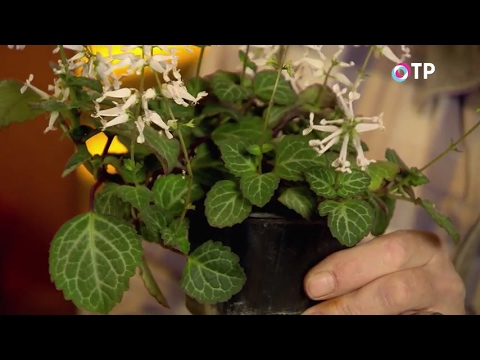

Watch this video on YouTube
Diseases and pests
The sparrow is highly resistant to pests and diseases. However, if the bush is in a cool room with high humidity, then it can be struck by downy mildew, due to which gray spots form on the foliage. Sometimes mealybugs, aphids and spider mites settle on such a plant. To cope with peronosporosis, it will be necessary to repeatedly treat the flower with a solution of a fungicidal preparation, and those stems that are very affected are recommended to be cut. Ticks, aphids, and also worms can harm foliage and young shoots, as they suck out cell sap from them. To cope with spider mites, acaricidal preparations are used, and insecticidal preparations are used to get rid of other sucking harmful insects.
Remember that those flowers that are highly resistant to both diseases and pests can only suffer from them if you do not care for them for a long time or do not provide them with suitable conditions. For example, due to the fact that the bush grows in unsuitable conditions for it, its foliage may begin to wither or fade. This happens when the flower is exposed to direct scorching rays of the sun for a long time. Yellowing and flying around the foliage is observed if the plant is cold, or pests have settled on it, or liquid regularly stagnates in its root system. If the room is too hot and dry, then the flower wilts, and from stagnant water in the substrate, especially with poor lighting and coolness, rot appears on the shoots and the root system, as a result of this, the foliage begins to fly around, and flowering also does not occur.
Types and varieties of plectrantus with photos and names
Plectranthus coleoides
This species is one of the most popular indoor plectranthus.A meter high, the shrub has tetrahedral straight shoots, on the surface of which there is pubescence, they are decorated with fleecy leaf plates up to 80 mm in length, their edge is crenate. One of the varieties of this species, Marginatus, is the most widespread: it is a variegated bristle flower with a white border along the edge of green leaf plates.
Shrub Plectranthus (Plectranthus fruticosus)
Or a molar tree. In height, such a branched shrub reaches about 100 cm, there is pubescence on the surface of its stems. Green leafy plates are broadly oval and with a pointed tip up to 100 mm long, they have a sharp mint aroma. The bush blooms lushly with fragrant flowers of a light blue hue. Since the plant has a strong odor, it is often used as a moth repellent. Under natural conditions, such a plant can be found in the subtropical humid forests of South Africa.
Plectranthus oertendahlii
This species is a spectacular herbaceous perennial plant with creeping stems about 0.4 m long. The length of the greenish-brown leaf plates is about 60 mm, they have a round-wide ovoid shape and a blunt apex. The front surface of the foliage is decorated with stripes of greenish-white color, and the back is decorated with light red pubescence. The length of racemose inflorescences is about 0.3 m, they consist of white or pale lilac flowers. The following varieties are most popular with florists:
- Limelight - foliage has a golden color;
- Uwongo - on the front surface of the leaves of such a plant, it is as if an equal spot of a greenish-silver hue is spilled.
Southern Plekranthus (Plectranthus australis)
Or plectranthus verticillatus, or plectranthus nummularia, or Swedish ivy. This original plant is distinguished by its unpretentiousness. Its drooping weak stems are decorated with rounded leaf plates with long petioles. The leaves have a deep green color, and their both surfaces are smooth and glossy, as if covered with wax. This species has a very low odor. It is often cultivated as an ampelous plant.
Felt plectrantus (Plectranthus hadiensis)
Such a shrub reaches a height of 0.75 m, its trunk lignifies with age. On slightly drooping stems there are greenish fleshy leaf plates of a wide ovate shape. The surface of foliage and shoots is covered with short hairs, as a result of which the bush looks soft and fluffy. The color of the flowers is purple.
Plectranthus ciliatus (Plectranthus ciliatus)
The height of this creeping plant is about 0.6 m, its shoots are covered with purple hairs. On the front surface of the elliptical or broadly ovate foliage, there is also rigid pubescence, and on the seamy side, painted in purple, there are hairs only on the edge. Flowers can be part of brushes or be single, they are painted in pale purple or white.
Fragrant Plectranthus (Plectranthus amboinicus)
Or fragrant plectrantus. Under natural conditions, such a branched shrub reaches a height of about 200 cm. Its tetrahedral shoots are colored greenish-purple. Broadly ovate opposite leaf plates have a cordate or rounded base, as well as a rounded or obtuse apex. Their petioles are pubescent, and there are glandular hairs on the seamy surface. The inflorescences consist of fragrant flowers of a pale blue hue.
Ernst's Sparrow (Plectranthus ernestii)
Or caudex plectrantus. This species is represented by a perennial shrub, which reaches a height of about 0.5 m. Its shoots in the lower part form a rounded thickening. During flowering, whitish or purple-blue flowers appear.
Plectranthus oakleaf
Erect shoots of such a plant are fleshy. Dark green leathery leaf plates with a serrated edge have a shape similar to oak leaves, their surface is covered with silvery pubescence. Tearing off a leaf and rubbing it between your fingers, you can smell a pungent coniferous smell.
Plectrantus Mona Lavender
This upright shrub is a hybrid. Its shoots, painted brownish-brown, are decorated with ovoid leaf plates serrated along the edge, their seamy surface is purple and pubescent, and the front surface is dark green and shiny. The dense, long inflorescences consist of bluish-purple flowers with a tubular blue speck.
Plectranthus blumei
The height of such a hybrid plant is about 0.85 m. Its herbaceous shoots are lignified at the roots. Both surfaces of the round foliage of an emerald hue are velvety, the tops of the plates are elongated and pointed, and the edge is serrated or jagged. There are also varieties of Blum's bristle flower with a different color of foliage and with a characteristic pattern.
Plectrantus properties: benefit and harm
Useful properties of plectrantus
All plants such as Spanish thyme, French thyme, Mexican mint, Cuban oregano, or Indian borage are considered to be a variety of spurs and are often cultivated as leafy greens. The benefits of such a plant are primarily due to the fact that it contains vitamins A, C and E, phenol and quinine compounds, terpenoids, alkaloids, glycosides, tannins and ursolic acid. Spore flower has a diaphoretic, analgesic, choleretic and laxative effect, it is used to soothe heartburn, stimulate appetite, relieve constipation and to treat rheumatism and gastritis. The aromatic plectrantus type is used in the manufacture of cardiovascular agents, ointments and drops.
Sparrow is not a pharmacopoeial plant, but in alternative medicine it is quite widespread. For example, tea made from the foliage of plectrantus is used during the treatment of fever, the initial stage of rheumatism, colds, respiratory diseases, irritable bowel syndrome and disorders of the digestive tract. This plant also has expectorant properties, and it removes phlegm and mucus from the lungs quickly and easily, and it also has a beneficial effect on the nervous system. It is also widely used for diarrhea and helminthiasis, and the tincture helps to relieve joint pain in rheumatoid arthritis. Outwardly, such a plant is used to combat childhood allergic diathesis, skin eczema, diaper rash and ulcers. It is also able to eliminate swelling and itching after an insect bite. For the treatment of enuresis in a child, baths are used with dry or fresh foliage of such a plant. Sparrow is widely used in India to stimulate lactation and treat malaria fever, and an infusion made from its foliage can relieve dandruff.
Contraindications
You can not take orally products made on the basis of the bristle flower, as well as drink tea made from its foliage for children under 12 years old and pregnant women, as well as women who are breastfeeding. If a person has sensitive skin, then after contact with the foliage of this plant, he may develop a mild degree of dermatitis. Plectrantus also poses a danger to people with varicose veins, with individual intolerance and hypotension. If you have no contraindications, then you must adhere to the recommended dosage and not abuse the products made on the basis of such a plant.
Superstitions and omens
Many gardeners do not know for sure whether it is possible to grow plectranthus in their home. Many signs and superstitions are associated with this plant, so it is believed that it is capable of absorbing negative energy, as well as attracting good luck and wealth to the house.At the same time, the bristle flower can bring good luck both to its owner and to the person who has courted him at least once. In this regard, such a plant is perfect for both an apartment and an office.
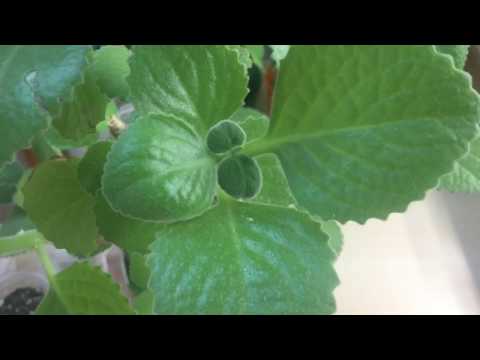

Watch this video on YouTube

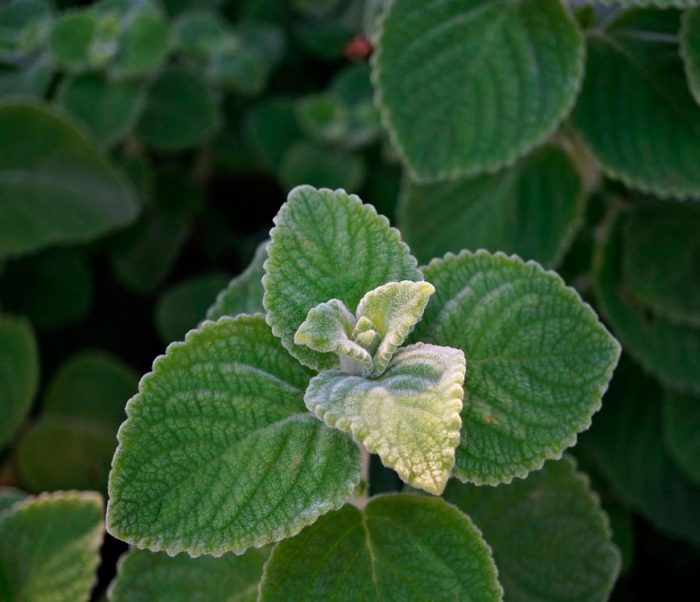
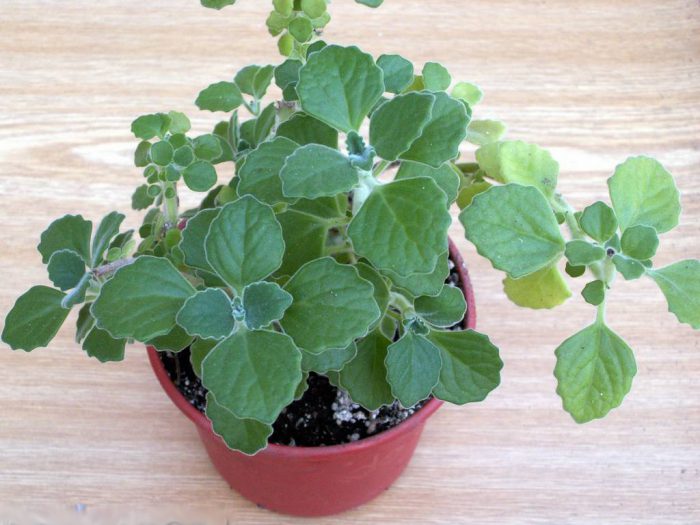
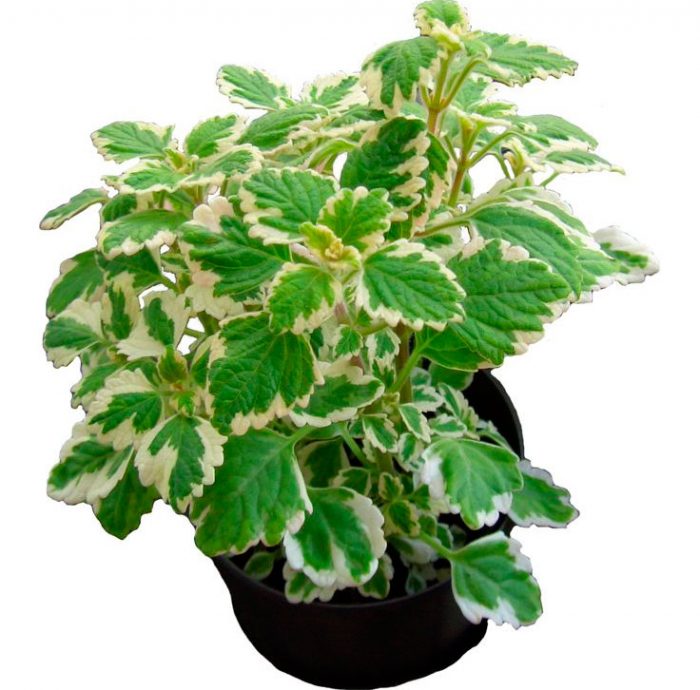
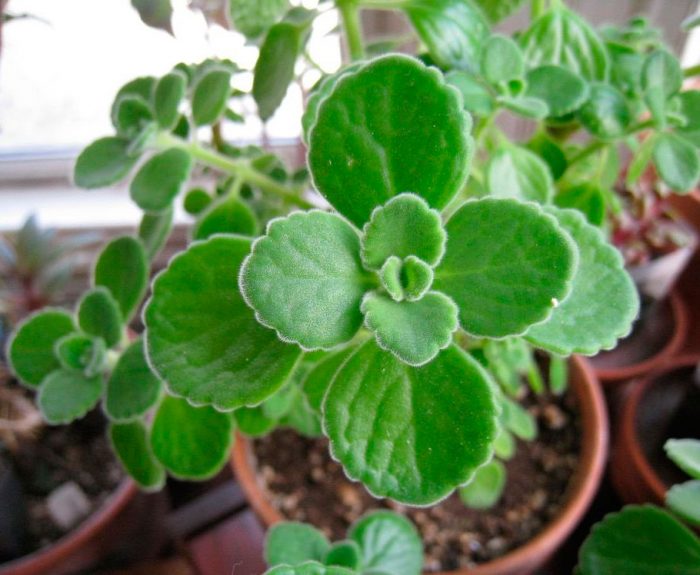
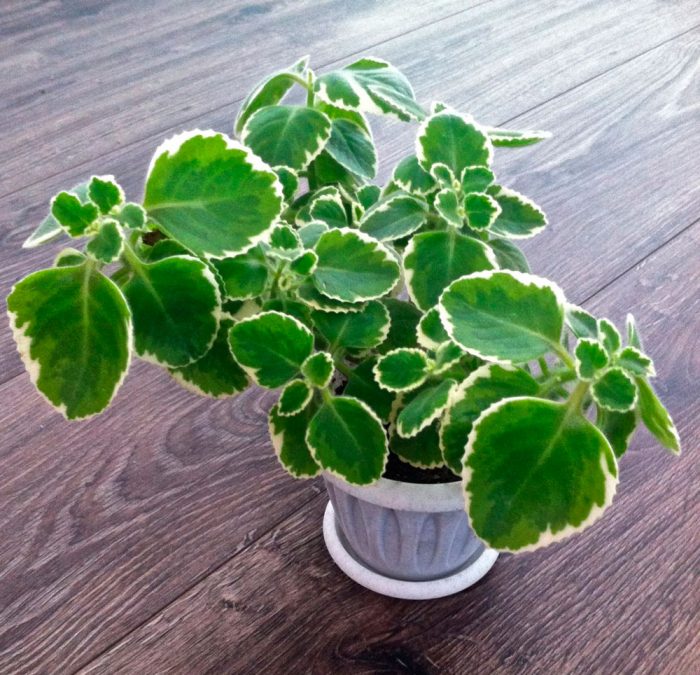
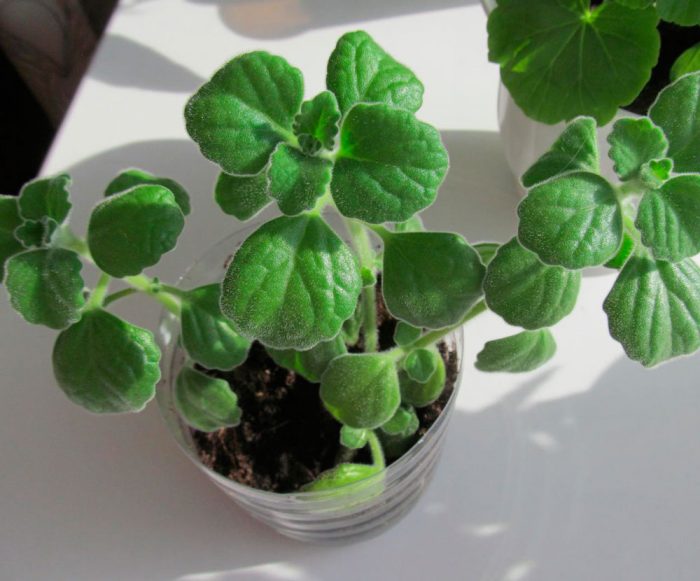
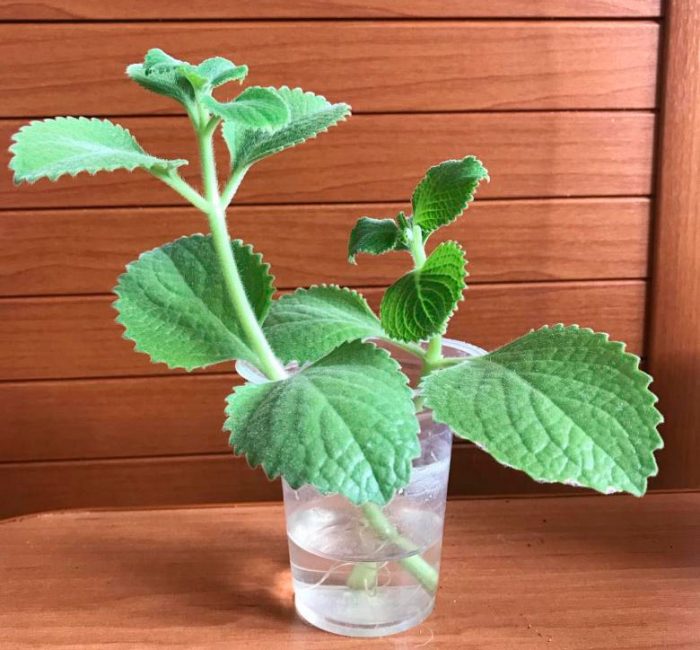
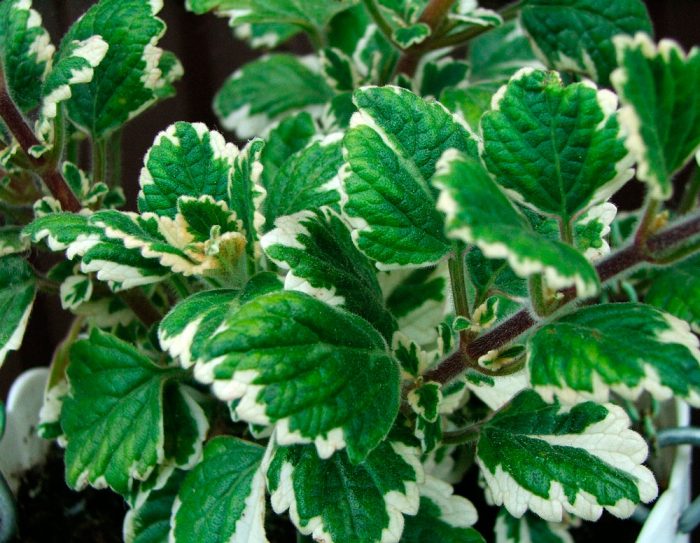
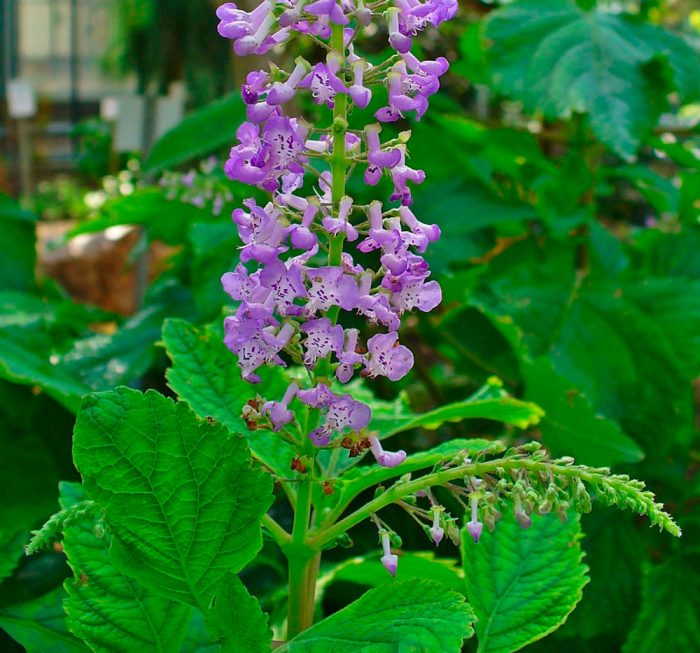

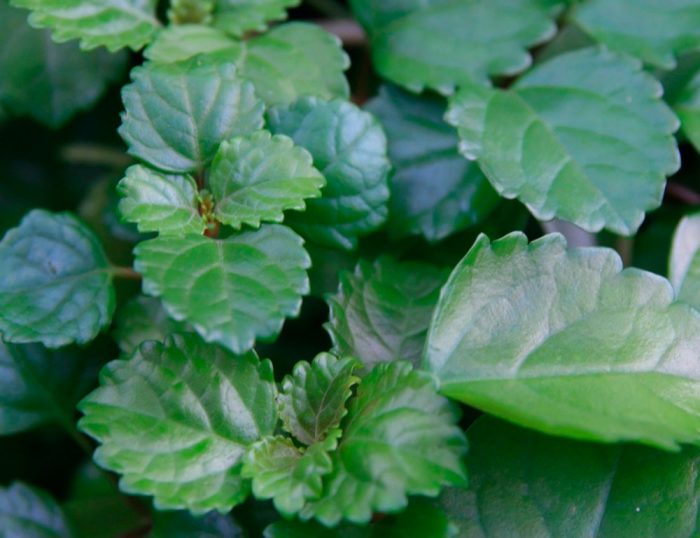

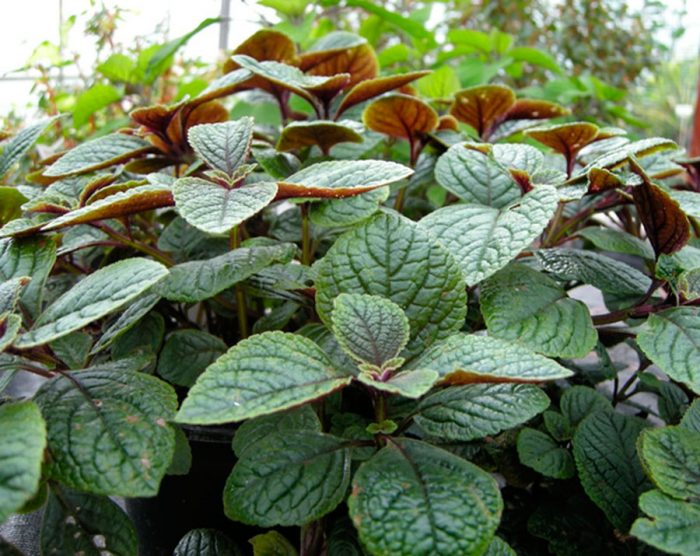
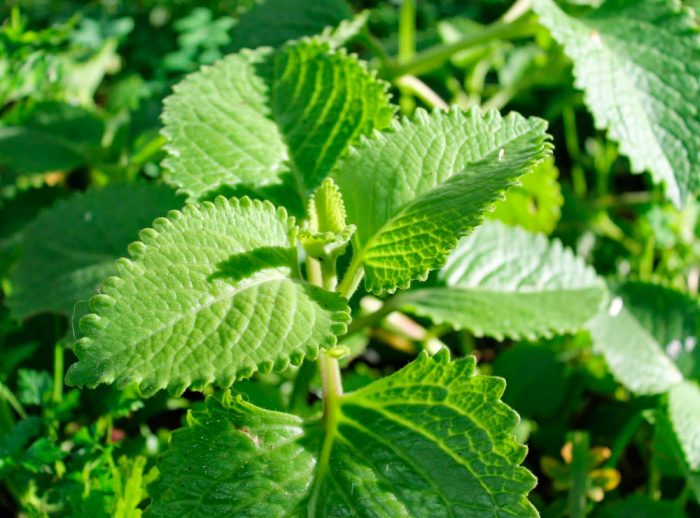
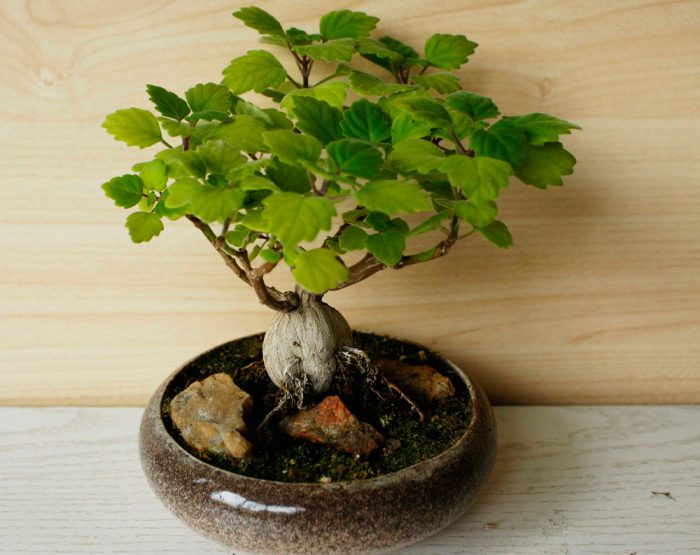
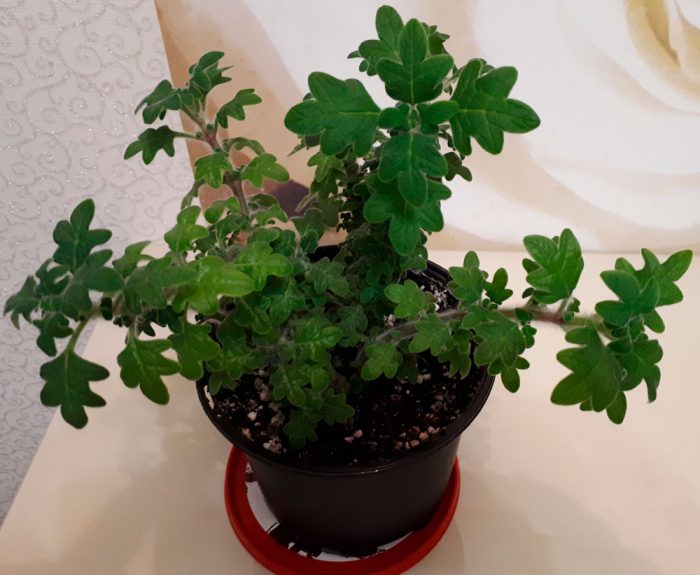
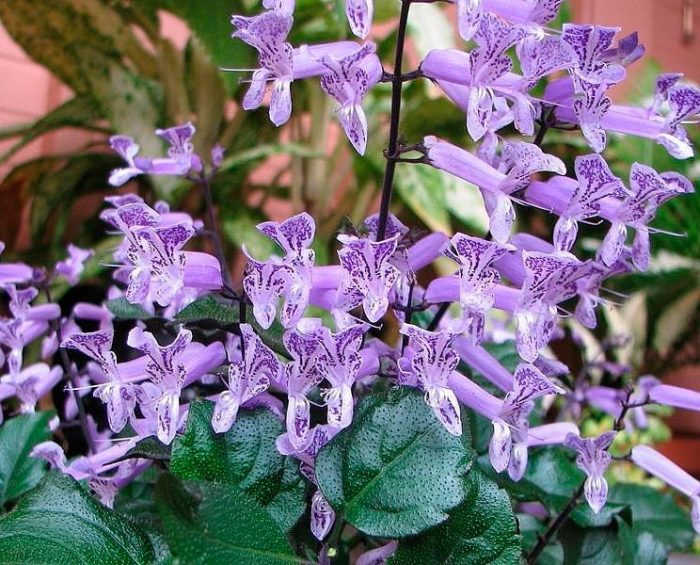
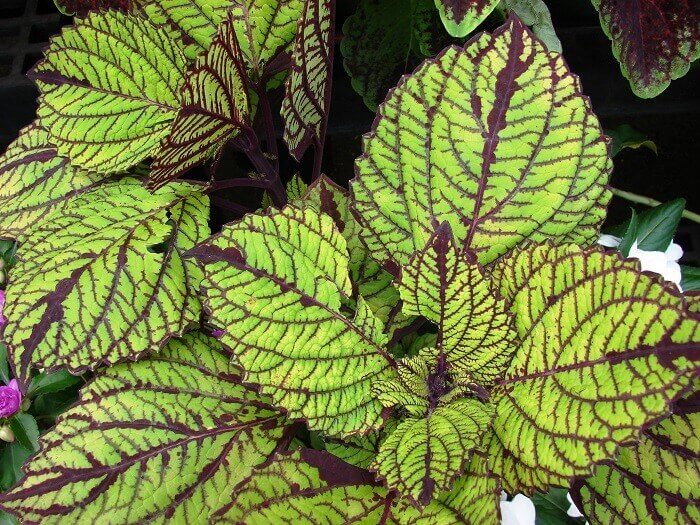
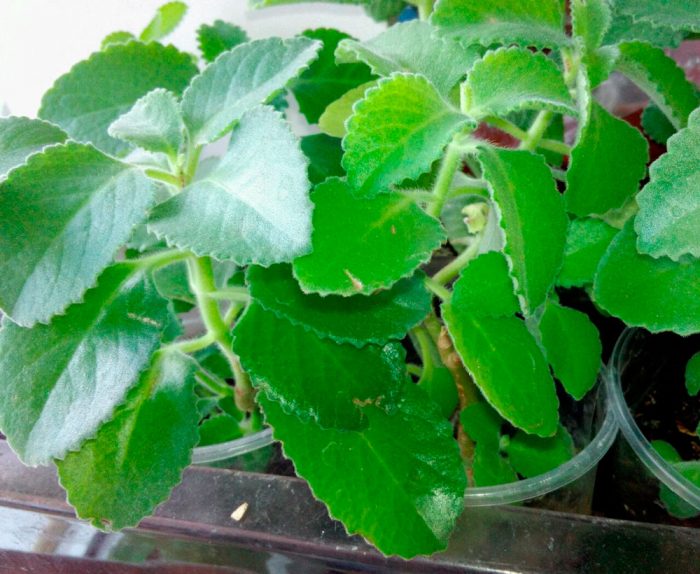


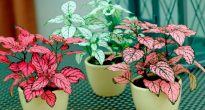
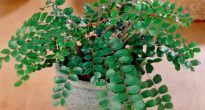
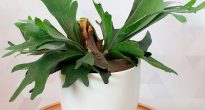
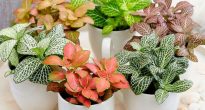
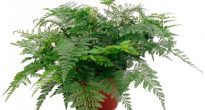
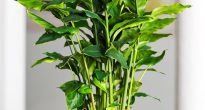
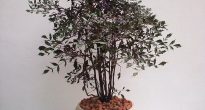


I have such a flower growing for about 10 years but has never bloomed
Several years ago, I grew up with southern or mint plectranthus. a luxurious ampelous plant. I stood on a high refrigerator in the kitchen and felt great there. I especially liked the aroma that came from this plant. But for an important reason I had to melt with it. And for many months now I have been dreaming of adding this to my home greenhouse plant, I did not see it in stores on sale. One hope is for retired grandmothers, my peers, who sell rooted cuttings of indoor plants at a supermarket next to a polyclinic in my neighborhood.